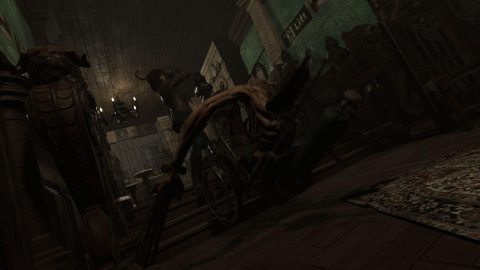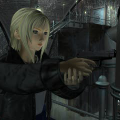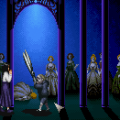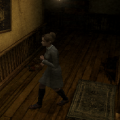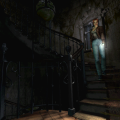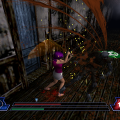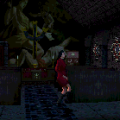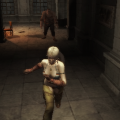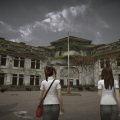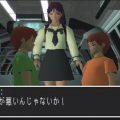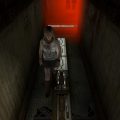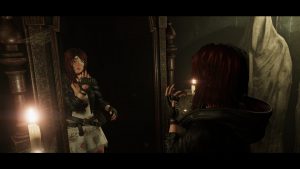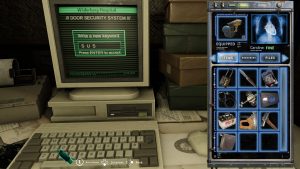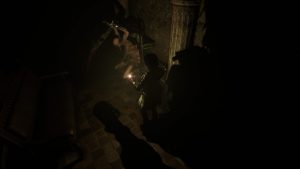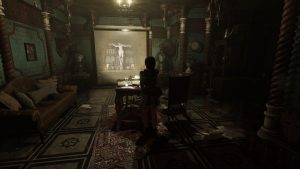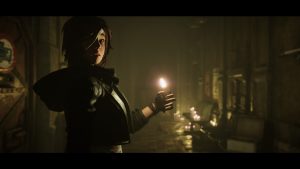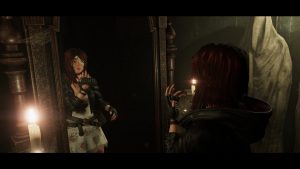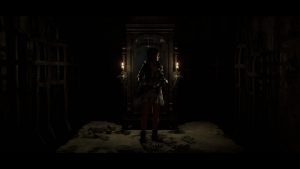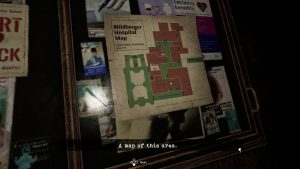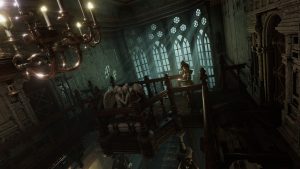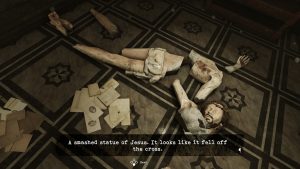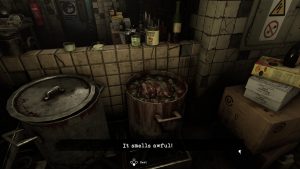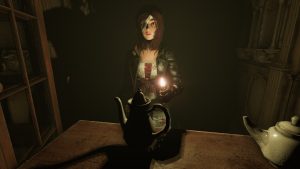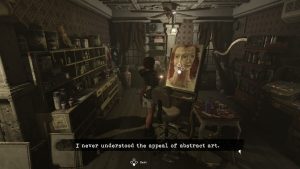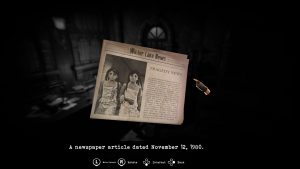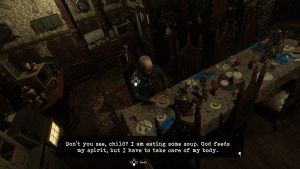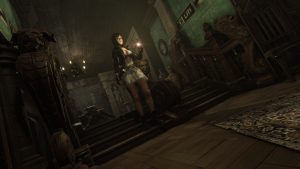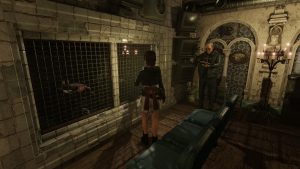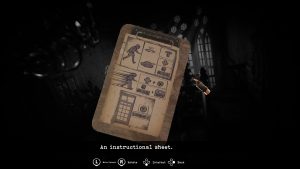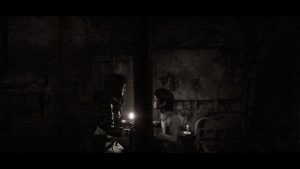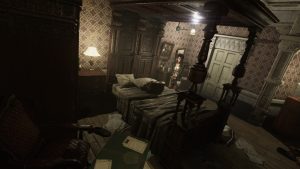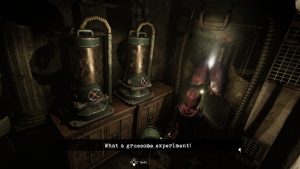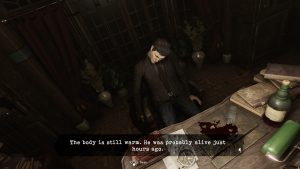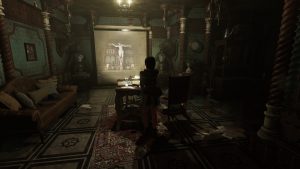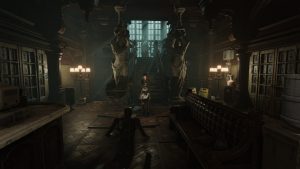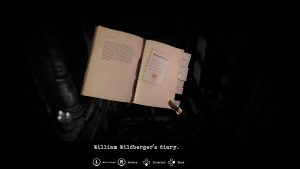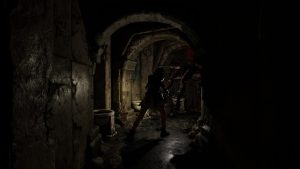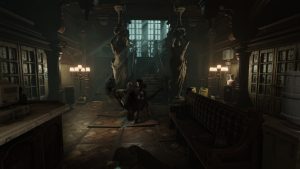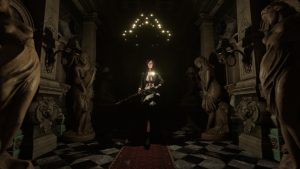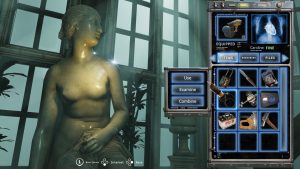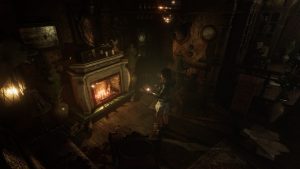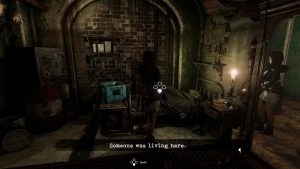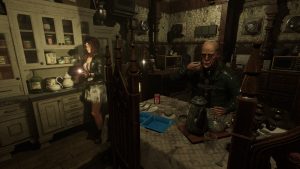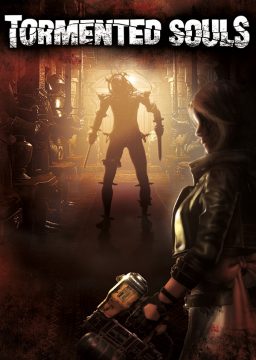
Resident Evil and Silent Hill were once the dominant leading franchises of the survival horror genre, ushering in a new style of gameplay and storytelling before each series evolved in different directions. Silent Hill was handed off to different developers who each had their own take, before Konami decided to become what they are today. Resident Evil also changed its gameplay style and theme to be more focused on action, before remaking itself again in the first-person perspective.
But while survival horror has moved on in other ways, Chilean developer Abstract Digital Works and Italian developer Dual Effect teamed up to bring back the old style of Resident Evil and Silent Hill games with an indie horror game of their own, Tormented Souls.
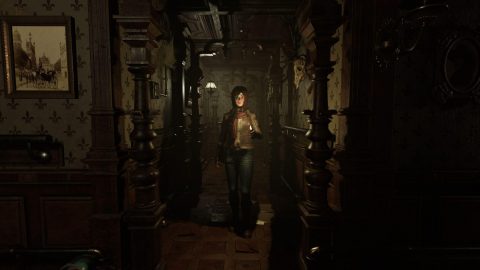
Tormented Souls definitely takes us back with its retro style of survival horror gameplay. Pre-baked camera angles that the player can’t change, optional tank controls (where up is forwards and left/right turn the character) alongside regular analog controls (where pushing in a direction moves in that direction), room-by-room level design with black screen transitions between rooms, progress sometimes being locked behind puzzles, and the path being sometimes blocked by simple objects that any human should be able to just step over. These are all staples of the genre that newer games have largely moved past.
The Resident Evil feature of being able to rotate objects in inventory and search them for hidden secrets and interactivity is also brought back. Saves are also limited, in the form of recording tapes that players must find and use on a recording device; if players are out of recording tapes, they cannot save their game. Various collected objects are used to solve puzzles, which are required for making progress.
But that’s not to say that Tormented Souls is only stuck in the past. It takes some of these retro elements and evolves them a bit. For example, the recording tape that the protagonist uses also serves an in-story purpose: occasionally, she will actually voice her thoughts aloud on what’s happening, as if she’s genuinely recording her progress for other people to listen to if she were to die.
The game’s themes are also a bit different. While Resident Evil games went for a sci-fi type of zombie and monster horror, and Silent Hill went the supernatural and psychological route with different visual motifs throughout its lifetime, Tormented Souls has its own distinct identity. Its setting is a mansion that also triples as a church and a hospital, and looks like a mixture of all three. Both the visual motifs, and the story and themes are a combination of religious horror, familial abuse horror, and especially medical and body horror.
Major plot revelations are primarily told through the game’s many diary entries rather than its few cutscenes. As you encounter more diary entries, you get a clearer picture of exactly what’s going on, and how things connect to each other in the story.
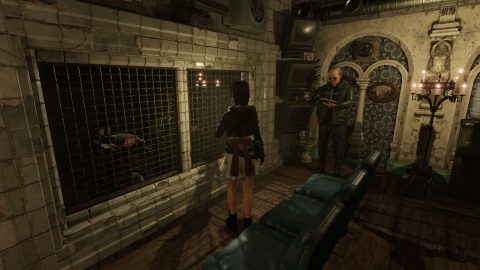
The story begins in December 1994 with Caroline Walker, a Canadian woman, receiving a photograph in the mail of two twin girls that prompts her to find out what is happening with them. As she enters the mansion/church/hospital, she is knocked unconscious. She wakes up nude in a bathtub, to find her right eye has been cut out, her face bandaged up, and a tube has been inserted down her throat. Getting up, Caroline quickly gets dressed and solves the game’s first puzzle before leaving the bathroom, now with many questions that need to be answered. She soon finds her first weapon, and its accompanying, fourth wall-breaking instruction sheet. Close by, she gets to test her new equipment on her first enemy.
With the dominant theme being a hospital, the enemies are naturally hospital-themed. They’re nearly all disfigured, mutilated human bodies that do things like crawl around without legs, are stapled to walls, have their hands replaced with knives, and other such disfigurements. And of course, they’re all trying to kill you.
Combat with these suffering creatures is very clunky, in the style of the original Resident Evil and Silent Hill games. You hold a button to ready your weapon, which locks you into place while you can only turn and shoot or melee. There’s also a dodge with invincibility frames. The cooldown delay between being able to perform an attack and a dodge means that you can’t react instantly, but instead have to almost plan out any dodges you’re going to do. There’s also an auto-aim if you’re close enough to the enemy when you press the aim button. Using the auto-aim can help figure out if an offscreen enemy is within attacking range, as Caroline will track its movement with her weapon.
You can save ammo by whacking enemies who are down with a crowbar, or goading enemies into attacking, then hitting them during their cooldown period.
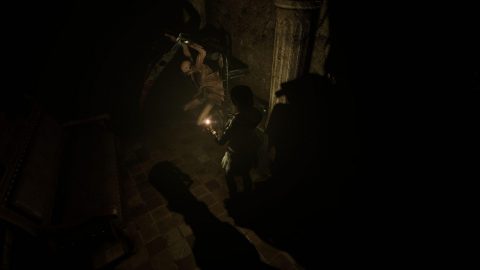
One particular enemy type that’s stuck to a wall essentially serves as a puzzle gate. It stays in one place and cannot be killed in the dark, so it basically blocks your progress until you’ve earned the ability to get past it.
As is the case with these types of games, combat isn’t the point. Instead, it’s all about atmosphere. And Tormented Souls has a terrifying, intimidating atmosphere. There are elements of the supernatural and the occasional jump scare, but mostly the horror comes from other things.
There’s a lot of medical and body horror, which involves organs and twisted corpses and people who have been experimented on to the point of being twisted, misshapen, dead, or having been turned into the game’s enemies.
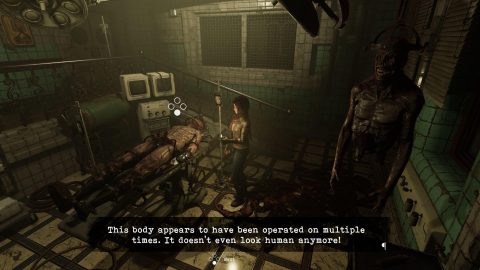
There’s also a great deal of religious imagery, including angel statues, historical Christian paintings, ornate crosses both rightside up and upside down, and a smashed statue of Jesus. Sometimes the two are combined, such as when a stethoscope must be used on a statue to listen to its heartbeat as a puzzle solution.
Darkness is everywhere, and it even serves as a gameplay element. Being in pitch darkness for five seconds without a light source results in an instant death scene of Caroline being dragged away. You can use your lighter to see in the dark, but you can’t equip both your lighter and a weapon at the same time. So naturally, there are enemies in the dark, requiring you to avoid them until you can either light candles or turn on the lights in the room. Later, a body-mounted flashlight you can wear solves this problem, allowing you to enter the game’s pitch-dark locations and fight enemies at the same time.
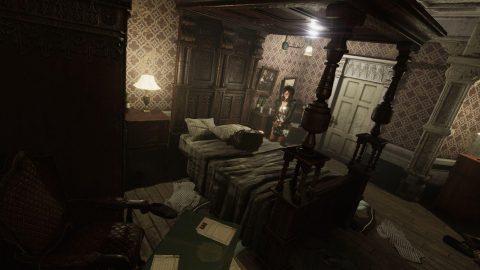
Ultimately, though, it could be said that the bulk of the game’s horror comes from its twisted and disturbing story.
As players progress, they encounter diaries. Each diary contains multiple entries, but only one can be read at a time. And the entries are what tell the story, far more than the game’s few cutscenes. Over time, the more that’s read in the diaries, the more the story comes together and things make sense.
The diary entries tell a horrifying tale that involves family members who are doing evil things to each other that other family members don’t know about, a religious cult, medical experimentation, opposing agendas, long-term imprisonment and more. In a classic example of video game storytelling logic, each major person in the story has their own diary, with numerous entries located all throughout the game. The more of the scattered entries you find, the more the full picture begins to reveal itself. The game’s cutscenes are far more understandable in light of the diary entries, which provide context for what’s going on and why.
And there is a lot going on, with some events being reported from different perspectives. It can be shocking to read a seemingly normal diary entry about a mother’s anger at her daughters ruining their brand-new dresses, and then much later, read someone else’s diary explaining exactly why that happened. Suffice to say, there were messed up things going on here long before Caroline Walker arrived.
Unlike games where most of the readable material is lore, Tormented Souls’s use of diaries helps humanize its characters and make the horror more intensely personal. They also cause the game’s disturbing imagery to become much more disturbing once it becomes clear what it actually means. If a diary entry mentions that something happened somewhere, then there’s a chance you’ll be able to actually visit that location and even see evidence of the atrocity that occurred. Ultimately, the diary entries tie into the game’s world in a major way and flesh it out.
Because of this, not reading the diaries can result in the story being hard to follow and the horrific imagery feeling more random. But reading them brings the horror to life in an even bigger way. So much of the story is revealed in subtle ways through diary entries and logs and other things, that multiple playthroughs can result in “so that’s what that refers to!” revelations as more details of the disturbing story come together.
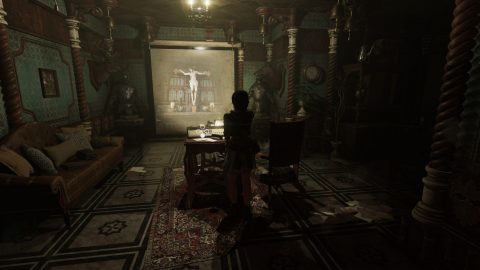
There are other aspects to the storytelling as well. There are mirrors that take Caroline to a twisted alternate universe, similar to Silent Hill’s Otherworld segments. Some of these are used for the game’s puzzles, where doing something in the alternate universe will affect the regular universe in a parallel way, such as sewing an arm onto a statue to fix a person’s severed arm in the real world.
Besides the mirrors, there are also video tapes that serve as a form of time travel when used on a projector, allowing Caroline to walk through the screen to when the tape was recorded. Here, Caroline could travel to times such as years in the past, or only a few days ago. She learns more about what has happened, and solves puzzles such as charging a battery in the recent past to retrieve it fully charged in the present.
Even the puzzles sometimes hint at aspects of the story. In fact, one late-game puzzle solution is literally a plot twist…
And if that’s not enough, the puzzles required to get the best ending make perfect sense in light of everything that’s been revealed in the story and connect perfectly to the plot.
On the other hand, most of the puzzles are typical survival horror randomness. Such as, combining pieces of a key together and then finding out what combination to turn the three dials to in order to open doors (based on clues posted on the doors); or, using a coin on a vending machine to play Simon with its buttons in order to get a bag of blood.
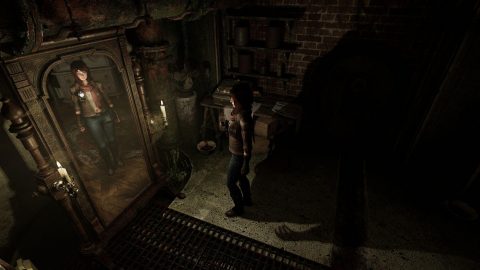
On a technical level, the game’s indie price hides surprisingly impressive production values. Environmental graphics are very realistic, though the people who appear in the story look kind of like realistically proportioned cartoon characters. This sometimes clashes with the use of photographs of real people that appear on posters and in photo frames. It’s a little weird to see a photograph of a real person on a hospital poster, then later a newspaper article of in-game characters who have cartoon faces.
The music is a mixture of primarily piano pieces for the calmer and more melancholic moments, and industrial songs used during the scarier moments and combat sequences.
There’s voice acting during dialog scenes, and it’s not great. There’s a moment where a particular villain character gives a speech about their motivations, and if this were any other low-budget game, they’d probably deliver the speech in the hammiest way possible. Instead, they deliver parts of their big speech in the most casual way possible, which is almost unintentionally hilarious. The rest of the voice acting mostly displays the correct emotions, though it’s still not especially good acting.
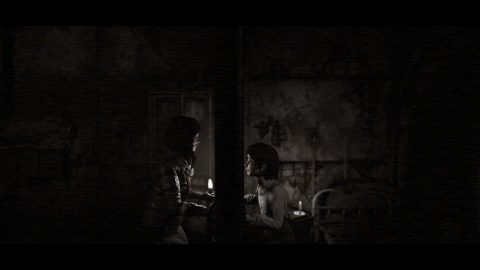
During dialog scenes, everybody freezes in place, not even moving their mouths as they talk. Notably, cutscenes are also very brief, and while animated well, they often lead into static dialog scenes. This might have been done to save on the animation budget, as animating characters emoting and lip syncing accurately across multiple dialog scenes can be tricky. Whereas, the game’s cycles for walking, attacking and being hurt can be repeated as necessary.
There is only a small number of enemy types, as new ones get introduced only occasionally.
In other words, it looks as though the budget was focused on the most noticeable parts of the production, namely, the graphics and animation during gameplay. In so doing, they could conserve the budget by avoiding complex lip-synced dialog, a big variety of enemy and weapon types, and decent actors. That might explain the game’s surprisingly low price at release.
Another thing to point out is that while the game takes place in one large building, the multiple visual motifs keep things varied. So, one room might look like it came from a cathedral, while a neighboring room looks like a room in a mansion, and another room will mix church and hospital visuals together. Beyond that, without spoiling anything, there are additional types of locations as well, particularly in the finale.
One odd aspect of Tormented Souls, possibly owing to its international development in both Chile and Italy, is the discrepancies between the game’s onscreen writing, and its graphics and voice acting.
Despite the game taking place in Canada, most diary entries are written in Spanish in the actual graphics, and clicking on them provides a translation. However, many posters and signs, some notes and diary entries and medical records are written in English inside the graphics, and the “translation” of the English graphics into English text frequently phrases things differently. Not only are things phrased differently, but sometimes bits of information relevant to the story are left out in the translation, and dates are frequently given incorrectly. A journal entry might clearly show “09-07-1971” in the graphics but the translation might list it as “15 September 1970,” which is way off. There’s also inconsistency in the graphics when it comes to the names “Wildberger” and “Wilderberg.”
This extends to the voice acting as well. Often, the actors will phrase things slightly differently than the subtitles. But at one point, a character states that a particular office is located in the… east wing? Or west wing? It depends on whether you’re listening to the actor’s voice or reading the subtitles, as the two don’t agree with each other.
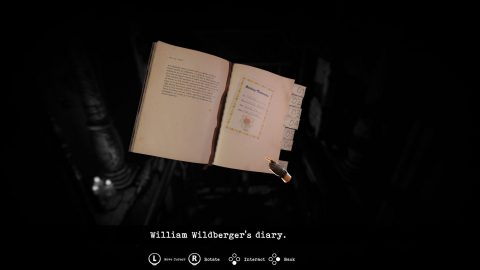
One truly strange discrepancy is when a diary, normally written in Spanish inside the graphics, suddenly changes to English with no explanation. Sometimes both Spanish and English will be used in the same graphic together!
All of this doesn’t hurt the gameplay, and the inconsistent information about the office location can be cleared up simply by looking at the map. But, these discrepancies are strange, and raise questions about how they occurred in the first place. Something appears to have gotten lost in the translation between the Chilean scriptwriters, the Italian co-developer, and the translators for other languages. Perhaps it’s another casualty of the game’s budget being focused on the graphics at the expense of other departments.
Another issue is that when Caroline learns certain things that should change her thoughts on some subjects, re-examining the things she’s now learned about will simply cause her to repeat her previous thoughts. This is in contrast to games like Silent Hill 3, which frequently changed Heather’s very opinionated thoughts on objects based on what she’s learned about them and even how many times she examined them.
On more gameplay-related issues, there’s an unkillable enemy that frequently shows up at random in certain rooms later in the game. While it can be stunned or goaded into attacking the player and missing, it’s actually even easier to deal with than that – just leave the room and come back, and it’ll despawn. It has the potential to eat up a lot of ammo or health, but as long as you notice the music announcing its arrival and then do a 180 out the door, it’s gone.
Aside from that, health, ammo and save tapes are plentiful enough that killing every enemy that’s encountered, rather than trying to get around them, is easily possible for veterans of the genre. The usual survival horror rules apply: learning how to dodge attacks, and making every shot count helps a lot. And groups of two or three quickly make melee fighting a nightmare.
Avoiding enemies is harder than in some other survival horror games, because there are very few open rooms with enough maneuvering space, and there are a lot of corridors. So, you’re gonna have to deal with the enemies somehow. The best way to spare ammo late in the game is to simply avoid shooting the unkillable enemy.
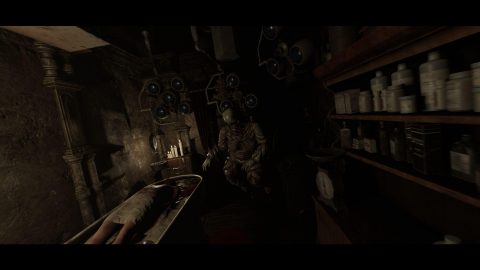
There is roughly one save tape for every 3.5 enemies on average, so saving the game before or after a big threat shouldn’t be too much of a problem for many players. Though, sometimes there is a long drought between discovering new tapes, so stocking up would be a good idea. There is only one boss and one miniboss (who later becomes a standard enemy), and no selectable difficulty levels.
As far as bonuses and rewards go, there are none, other than a tally at the end of the game showing basic stats such as completion time, diaries fully completed, and such. Free updates added a second outfit for Caroline to wear, and a hidden weapon in the form of a burst fire nailgun which consumes the same ammo as the regular nailgun. Both of these can be found early in the game without any special requirements.
And finally, there’s the pre-baked camera angles. Camera angles are chosen entirely based on the player’s location within a room, and so walking across a hallway or room can result in the camera angle suddenly changing, even facing the opposite direction! Using tank controls avoids this issue, but using analog movement can result in annoyingly having to suddenly reorient to the new camera angle. Usually this isn’t a problem during combat, but more of a nuisance when walking through some rooms. Also, while the PC version supports controllers, playing with a keyboard and mouse only allows tank controls.
But even with the issues it has, Tormented Souls is an impressive achievement from the indie scene. It’s a story-driven horror game with very detailed graphics, a scary atmosphere, multiple endings, and a very detailed and twisting character-driven story, told through a combination of environmental storytelling, diary entries, puzzles and cutscenes, sold at a budget price. It’s not for everyone, as its throwback take on survival horror might be a turnoff for some people, but it’s an example of how much the indie scene has been maturing across the late 2010s into the 2020s. During that time, indie games were becoming increasingly polished, and starting to get to the point where some of them can look almost indistinguishable from bigger budget games, while still carrying a lower price. And that says exciting things about the future of the industry.
